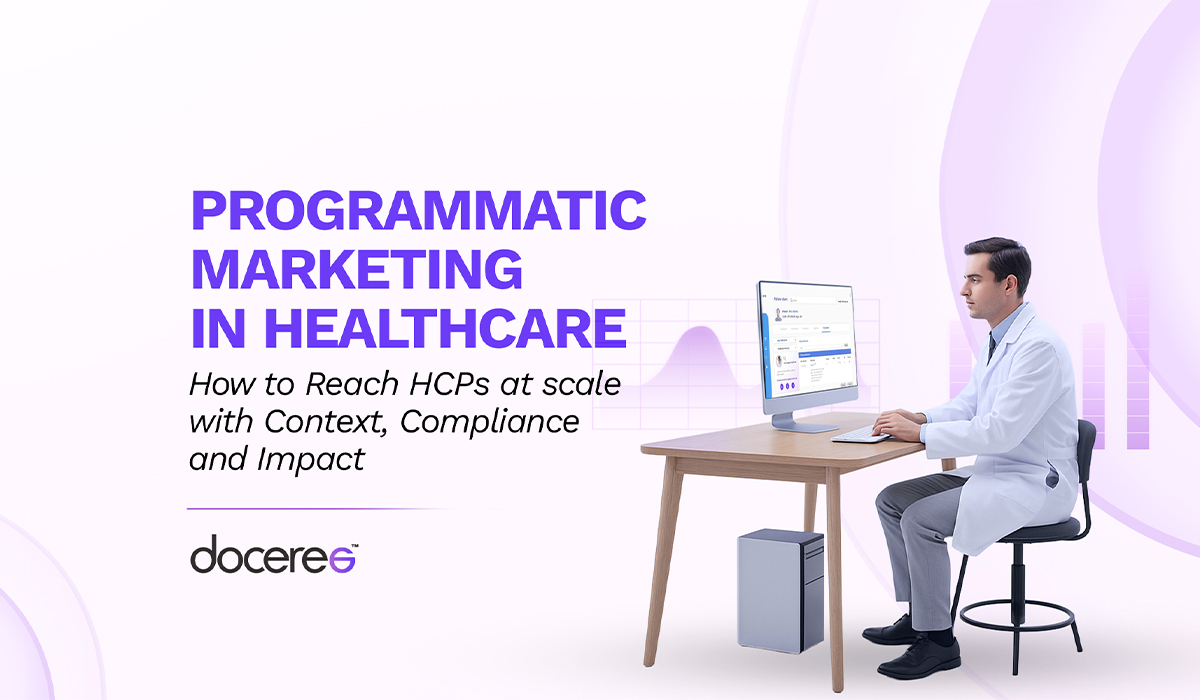
Programmatic Marketing in Healthcare: Why and how to reach HCPs at scale with Context, Compliance and Impact
The importance of contextual targeting for healthcare and pharma marketers
For healthcare marketers looking to engage HCPs on medical journal platforms, ensuring their audience is targeted effectively is more than just a best practice. In fact, it’s a vital step toward long-term success and achieving their goals. By accurately targeting their audience, marketers can eventually find themselves reaching the right healthcare professionals (HCPs) at the right time and the right juncture of clinical decision making - all with pinpoint precision. This approach also allows tailoring of messages to meet the specific needs of the HCPs, enhancing engagement, optimizing resource use, and boosting campaign effectiveness.
Understanding Programmatic Marketing in Healthcare
The role of programmatic on medical journal platforms plays in the healthcare space is quite important. It involves finding a place for a brand's messaging within platforms that are popular or at least get frequented regularly by HCPs—such as medical journals or websites. The idea here is simple: maximize relevance of the messaging and establish the credibility of marketing efforts. Unlike non-specialized platforms, programmatic partners with expertise in medical media marketing have deep roots within the ecosystem and often possess specialized insights that add value to the engagements they bring.
Because of their connection with the healthcare ecosystem, such partners also offer healthcare audiences accuracy, relevance and value.
The Influence of Precision Targeting and Audience Engagement
It is important to understand that healthcare is not a one-size-fits-all market. There are many variables to deal with, and as such, any marketing campaign and its messaging needs to factor this in. Case in point, a cardiologist who may have vastly different needs compared to a general practitioner. This is where the power of precision targeting is witnessed. Thanks to its nature, it allows programmatic advertising partners to segment audiences based on factors such as specialty, demographics, and behavior, thus allowing them to deliver tailored content for improved engagement.
Let's take the example of a pharmaceutical company which is launching a new drug for heart disease. Using precision targeting, the marketing partner can avoid targeting HCPs who aren’t cardiologists. Through well-directed nudges , they can enhance the chances of the brand's messaging reaching the right HCP at the right time for maximum mileage. Additionally, marketers significantly reduce the chances of alienating other HCPs by ensuring these HCPs are not plied with sludge, or unwanted, irrelevant and ill-timed messages.
Over time, their improved targeting efforts would enhance the relevance of their messaging and ultimately boost engagement metrics--click-through rates, time spent on content, or Rx lift.
Optimizing Limited Resources
Another key benefit of effectively targeting HCPs is that it allows programmatic marketing partners to make the best use of their finite and often slim budgets. Effective targeting at an programmatic marketing partner's end can ensure marketing budgets are utilized to the fullest, and more importantly, aren’t wasted on low-impact audiences, allowing marketers to focus on high-value segments.
Take medical device companies as an example. Their products often serve niche markets, like orthopedic surgeons or hospital procurement teams. A broad campaign might dilute impact and inflate costs, whereas targeting key decision-makers like surgeons ensures resources are being used where they’re most likely to convert.
Compliance is Key in Healthcare Marketing
Regulatory compliance introduces another important layer of complexity to healthcare marketing efforts. In a lot of cases, the information being shared is subject to stringent regulatory guidelines. As such, ineffective targeting by a programmatic marketing partner can result in messaging being shared with the wrong set of HCPs--one that’s not authorized to receive the information--thus leading to substantial fines, legal repercussions, or lasting reputational harm.
Effective targeting can significantly lower risks and, in some cases, even eliminate the problem by ensuring that the intended messaging is delivered to the appropriate audience for which it has been curated and approved. This precision not only enhances compliance with regulatory standards but also streamlines the approval process by reducing the likelihood of revisions or rejections.
Ultimately, effective targeting can save both valuable time and resources, allowing organizations to focus on crafting impactful, compliant campaigns while minimizing exposure to penalties and maintaining credibility within the highly scrutinized healthcare ecosystem.
Targeting - Not a One-off Task
Suffice to say, targeting isn’t a one-off task; it’s an iterative process that drives continuous improvement. For an industry that bases itself on trust, one where patients rely on HCPs for life-altering decisions, and HCPs depend on accurate information to deliver care, programmatic marketing partners should do their utmost to help with improving patient outcomes. The easiest way for them to do this is by treating the targeting of HCPs as more than just a one-off task. Marketers should focus on effective targeting as a long-term and ongoing process using the right tools to ensure their communications with HCPs are relevant rather than intrusive or unnecessary.